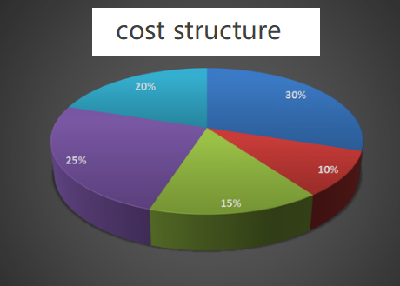What are the common cathode materials in the lithium battery industry chain?
Lithium battery industry chain:
The cathode material accounts for about 30-40% of the cost in the entire lithium battery industry chain. The performance of the cathode material is an important factor restricting the capacity of lithium batteries. Common cathode materials are: lithium cobalt oxide, lithium manganate, lithium iron phosphate, ternary materials and so on.

the cost in the entire lithium battery industry chain
Lithium Cobalt Oxide
The first successfully commercialized cathode material for lithium-ion batteries.
Due to the relatively poor resources of cobalt, high price, and toxicity to the environment, coupled with the poor safety performance and relatively low capacity of the material, its wide application and long-term development are greatly restricted.
Currently, lithium cobalt oxide material batteries are mainly used in digital batteries.
Lithium manganate
Mainly spinel-type lithium manganate. Compared with lithium cobalt oxide, it has the characteristics of abundant resources, low price, low environmental pollution and excellent safety performance. However, the structure of spinel is difficult to maintain integrity, and the cycleability is poor.
The dissolution of manganese in the electrolyte during high temperature cycles and the Jahn-Teller effect also cause serious capacity degradation of the material.
Lithium iron phosphate
Rich in raw materials, relatively low price compared to other materials, environmentally friendly, coupled with better cycle performance and high safety makes it the first to be used in electric vehicles.
However, the conductivity of lithium iron phosphate (Lifepo4) materials is poor, and the tap density is low, resulting in a low volume energy density, which limits its further application.
Ternary materials
Inspired by the doping modification of metal elements of lithium cobalt oxide, multi-element metal composite oxides—ternary materials LiNi 1-xy Co x N y O 2 (N=Mn, Al) get fast develop.
The ternary material combines the advantages of lithium cobaltite, lithium nickelate, and lithium manganate (lithium aluminate) to form a ternary co-solution, which can fully play the role of the three components.
The theoretical capacity is relatively high, with a relatively balanced nature, and occupies an important position in the power battery market.





